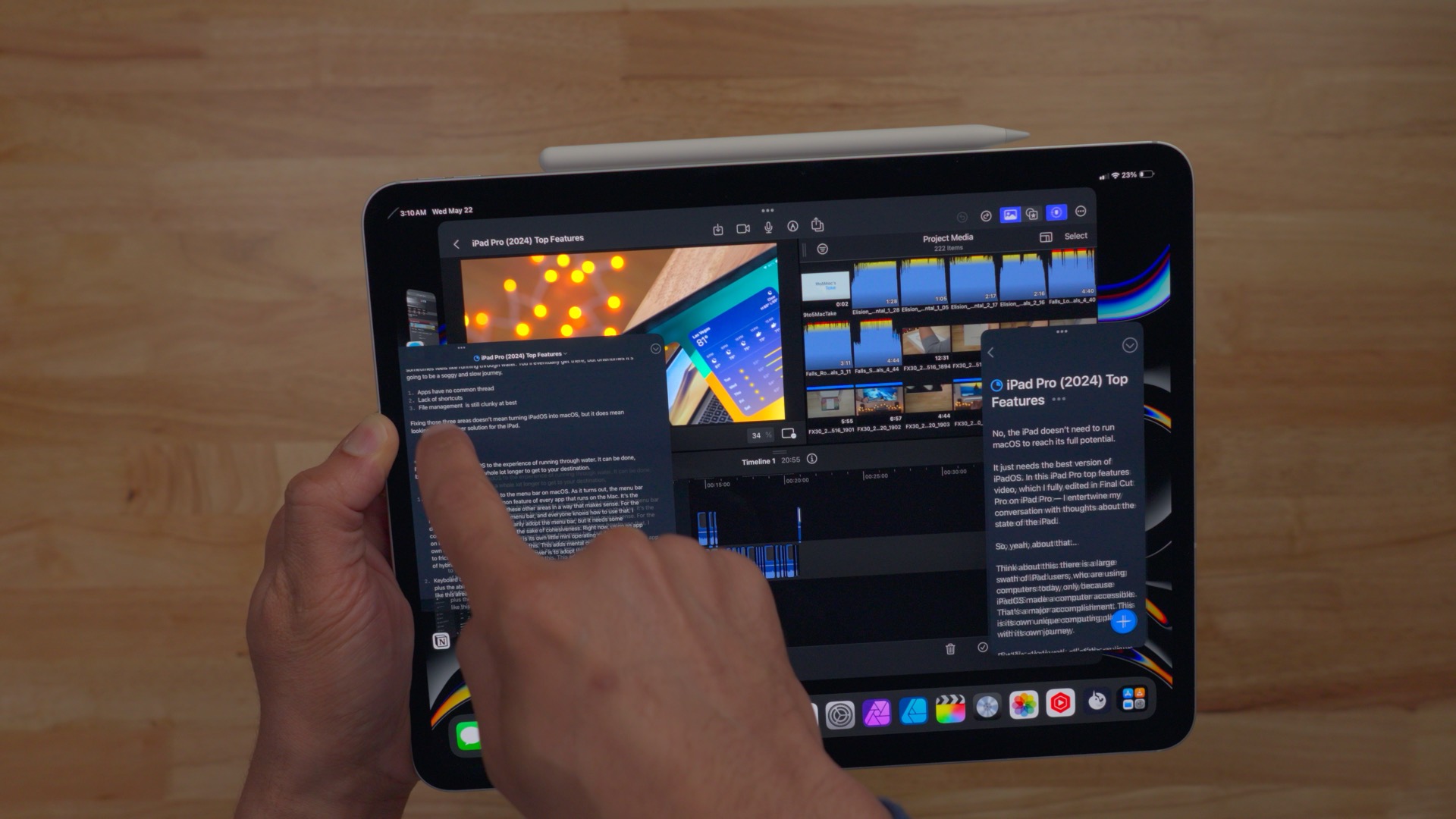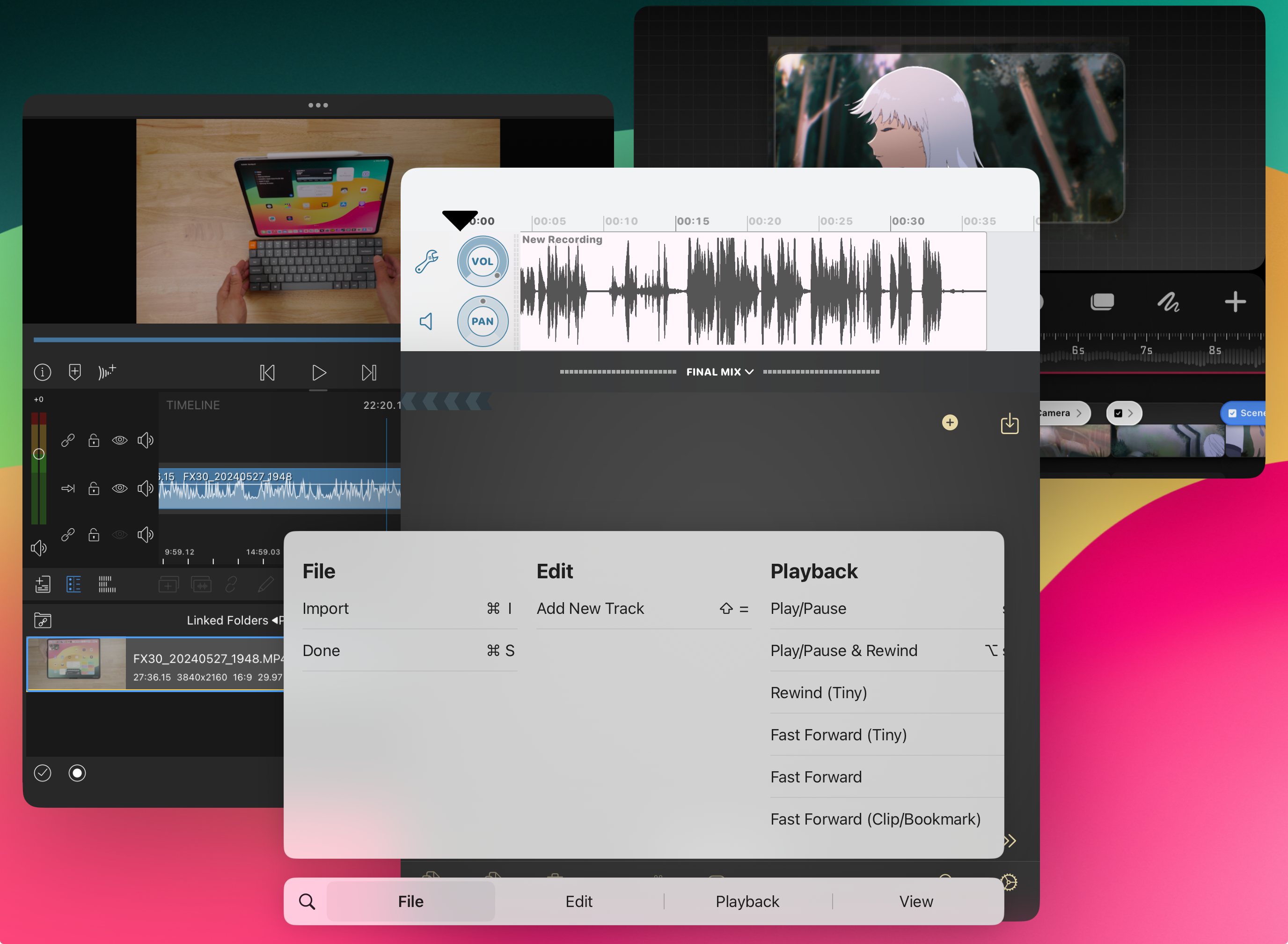I’ve been using the new M4 iPad Pro exclusively for the past week, resisting any urge to use my MacBook Pro as a kickstand. Needless to say, it was an educational, interesting and, dare I say, a amusing experience on many fronts. My biggest takeaway? The iPad has flaws, but iPadOS doesn’t have to be macOS to make it a good computer.
There are a large number of iPad users who use computers today. only because of iPadOS and its accessibility. The iPad arguably made computers more accessible to users who were once downright afraid of computers. For this reason alone, we should put some respect on the iPad name.
Before the latest batch of iPad Pro reviews came out, I predicted what the ongoing story would be, and I’m not even very good at making predictions. We’ve seen the same story over and over again over the years. Yes, the hardware is great…but the software falls short. Oh, and by the way, I’m guilty of this too.
For years, the iPad Pro has had hardware under the hood that’s more than capable of getting things done. For some users, it’s the flaws and idiosyncrasies of iPadOS that make it difficult to get the most out of its power.
However, that doesn’t mean the iPad needs to run macOS to reach its full potential. It just has to be the best version of iPadOS.

What does the best version of iPadOS look like?
I don’t think it looks like Apple copied and pasted macOS onto the iPad. I think it still feels a lot like the iPadOS that appears today, just with the kind of refinements and conveniences that more advanced users have come to expect. It also requires app developers to treat the platform like a first-class citizen.
There are many areas where I think iPadOS can improve, but there are three main areas that I think are some of the most important.
1. iPadOS apps and the need for a common thread
iPadOS apps almost feel like their own little operating systems running on the iPad. This is because each application has its own unique method of interacting with it, accessing the necessary tools, etc. The common thread that connects all the applications together to make a cohesive experience is missing.

On Mac, this common thread is the menu bar. It’s the place where, whatever the application, you can go and do the thing… whatever that thing is.
It could be argued that the current methodology for displaying keyboard shortcuts – holding down the Command key (⌘) – is essentially the iPadOS version of the menu bar. The problem with the keyboard shortcuts menu is that it relies on a connected keyboard, is slow to invoke, and takes up too much space. I think a more thoughtful redesign that serves both touch and keyboard users is needed.

2. Keyboard shortcuts, but taken seriously
This is both an iPadOS issue and an individual app issue. As fun and convenient as touch interfaces can be, they are not always suitable for certain tasks. Power users rely on keyboard shortcuts to do things more efficiently.
Of course, iPadOS has keyboard shortcuts, but they need to be taken more seriously by app developers, including Apple. If it exists as a function, it should, in most cases, have a corresponding keyboard shortcut.
I encountered one of the most egregious examples of this problem when editing the entire video embedded above on my iPad using Final Cut Pro. Apple’s Professional NLE is an incredible experience in many ways, especially for its touchscreen interface. I think this app has a tonne of potential, and I’m excited about Final Cut Pro for iPad 2, which should ship next month.


That being said, it’s missing features that video editors need that just aren’t there yet, and that’s understandable given how little the app has been around. What’s not as understandable is the lack of keyboard shortcuts for certain commands that TO DO currently exist, such as copy and paste effects between clips. Since there were no keyboard shortcuts for these commands, I had to endure the tedious process of manually copying and pasting effects between the hundred or so clips in my timeline so that they all matched.
Apple is also expected to implement a way for users to create their own keyboard shortcuts. Such a feature already exists as an accessibility setting in Settings > Accessibility > Keyboards > Full Keyboard Access, but it is only for customizing keyboard shortcuts used to navigate iPadOS, not for individual apps.

3. File Management for Toddlers
The Files app is a huge improvement over its first iteration when it was called iCloud Drive. I like how we now have more detailed information about files, how we can compress and decompress files, etc., but users need to have more flexibility in managing files.

One of the many frustrating things I encountered was the inability to preview video shot with my Sony FX30 via Quick Look. Opening the file with Quick Look produced a blank screen prompting me to open the file in another application.
There are many small problems like this that, in themselves, are not a big problem. But when you start adding up all the little file management shortcomings in iPadOS, it stands out.
iPadOS doesn’t need to be “fixed”
I compared the difference between using macOS and iPadOS to accomplish the same task, like the difference between running on land and running submerged in water. Eventually, you will both arrive at your destination, but who will finish first? Better yet, who will feel better After the race? Apple has drained much of the water that has bogged down the iPad experience, but there’s still more to do.
iPadOS is a high-performance platform, with its own unique paradigms. Some of its shortcomings can be considered strengths depending on how the light hits the prism so to speak. Gaps can also spur innovation when engineers are forced to approach a problem in a different way.


iPadOS does not need to be repaired, as this implies that iPadOS is broken. iPadOS needs to be improved and optimized. Improving the platform isn’t just about copying and pasting macOS onto the iPad. To improve iPadOS, Apple must pay close attention to the most basic user experience and interface flaws, while continuing to develop it with unique new features year after year. Apple hasn’t been perfect so far, but we need to recognize how far the iPad has come in a relatively short time.
Take from 9to5Mac
While Apple probably should have read the room before releasing the controversial ad in which it crushed all of creativity’s beloved physical relics into a thin and light iPad Pro, I got to what he was going with. This machine can wear an endless amount of hats, and it’s arguably the most versatile consumer electronics device ever created.
The software that powers it, iPadOS, works well. Many users will support this idea. We just have to be patient, let iPadOS be iPadOS, and allow the platform to continue to mature.
FTC: We use automatic, revenue-generating affiliate links. More.